- California Assembly OKs highest minimum wage in nation
- S. Korea unveils first graphic cigarette warnings
- US joins with South Korea, Japan in bid to deter North Korea
- LPGA golfer Chun In-gee finally back in action
- S. Korea won’t be top seed in final World Cup qualification round
- US men’s soccer misses 2nd straight Olympics
- US back on track in qualifying with 4-0 win over Guatemala
- High-intensity workout injuries spawn cottage industry
- CDC expands range of Zika mosquitoes into parts of Northeast
- Who knew? ‘The Walking Dead’ is helping families connect
Another typhoon forecast to hit S. Korea after Maysak rips through, killing 2
Another typhoon was forecast to approach South Korea later this week after Typhoon Maysak stormed through the country, killing two and disrupting flights and traffic.
Typhoon Haishen, the season’s tenth typhoon, was expected to rip through the Korean Peninsula, causing more of an impact than Maysak, which dissipated after moving into the East Sea.
Haishen was traveling at a speed of 22 kph over seas 1,100 kilometers northwest of Guam, as of 3 p.m. according to the Korea Meteorological Administration (KMA). Its maximum wind speed was 37 meters per second.
Haishen was forecast to land on the country’s southern coast early Monday before passing through Daegu and Chuncheon and moving upward to North Korea. The KMA projected the typhoon’s path to approach areas just 80 km away from Seoul at 3 p.m. on Monday.
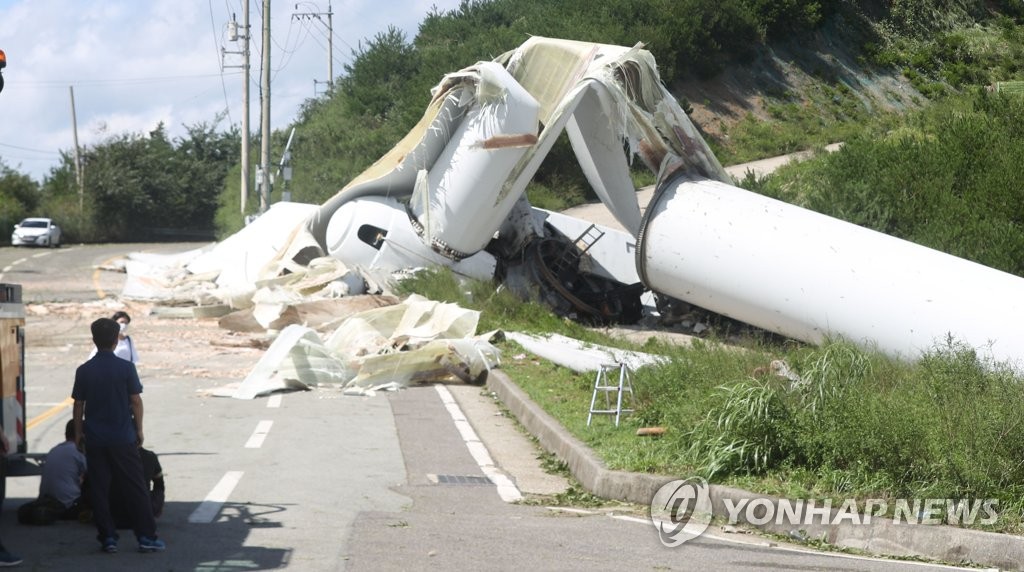
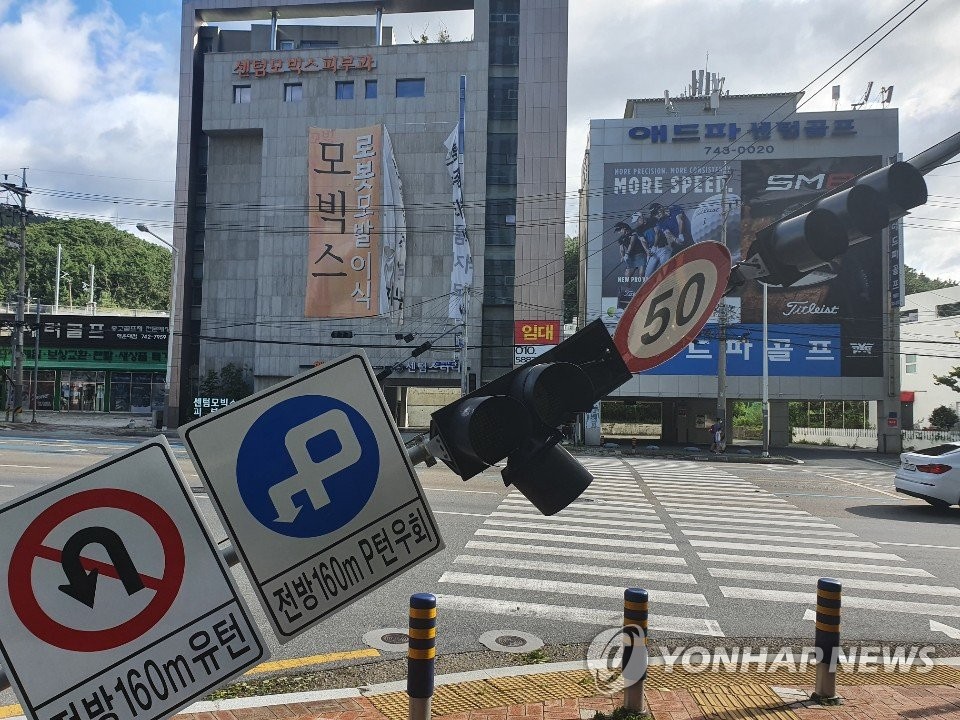

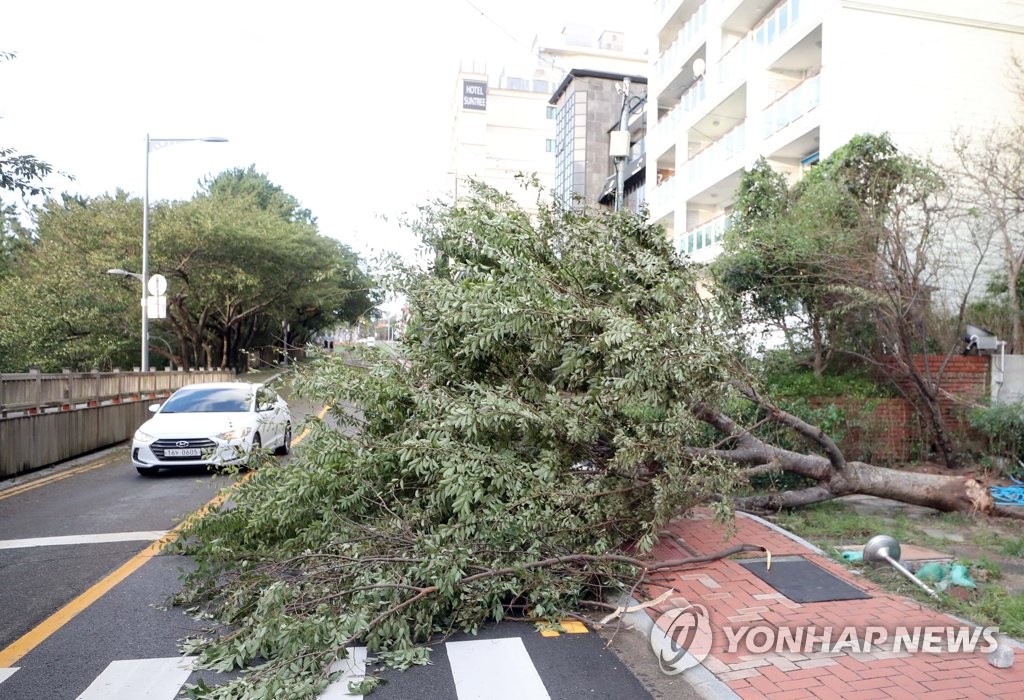
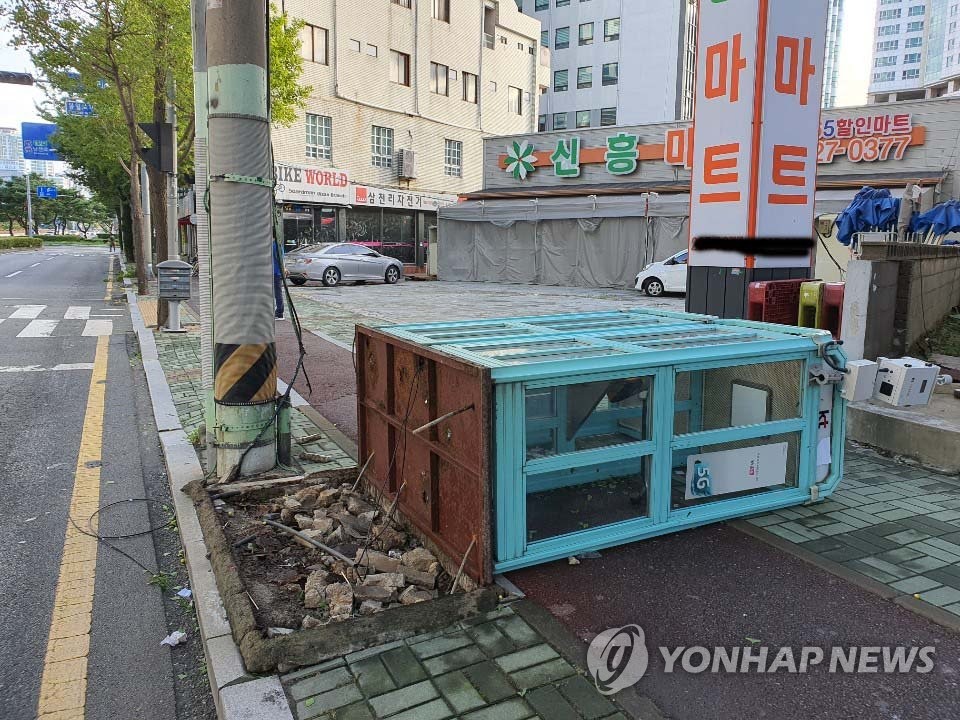
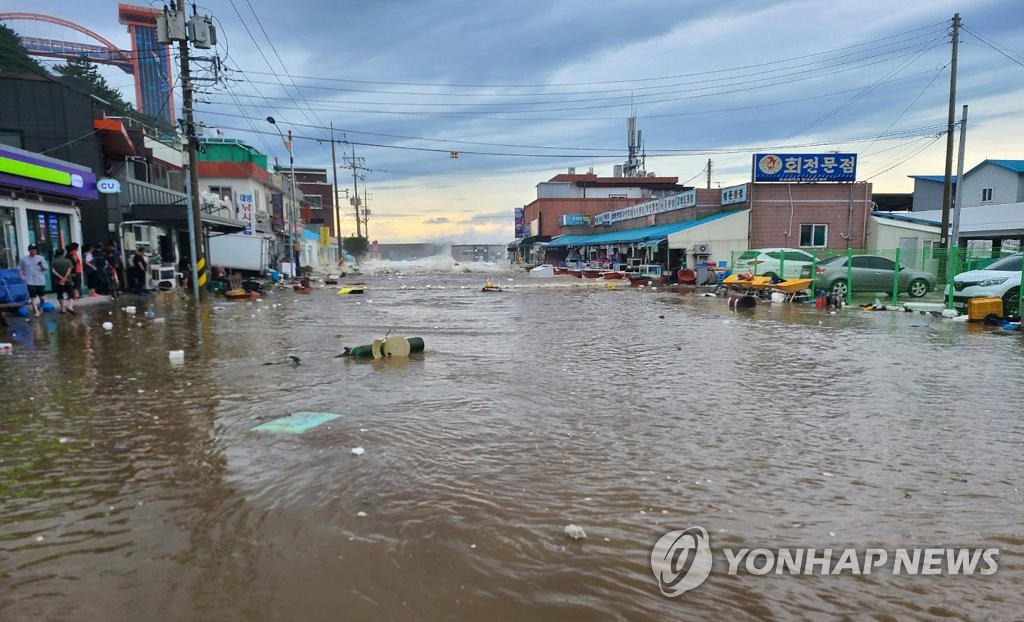
A wind power generator in Yangsan, South Gyeongsang Province, lies on the ground on Sept. 3, 2020, after falling from heavy winds that Typhoon Maysak brought. (Yonhap)
Maysak, which has weakened to an extratropical cyclone, hit the country with strong winds and heavy rains, killing two, injuring three and forcing 58 people to evacuate from their destroyed homes in Gangwon, Jeju, South Gyeongsang Province and Busan.
One victim was a resident in her 60s in the southeastern port city of Busan. She died from injuries after strong winds shattered a terrace window at her home.
Later in the day, a man in his 70s was found dead in the yard of his home in the city. He is believed to have fallen from the roof while repairing a leak.
A total of 2,834 people also temporarily evacuated from their homes in a precautionary measure against the typhoon, according to the Central Disaster and Safety Countermeasure Headquarters.
A combination of 1,550 facilities, vehicles, trees and other types of property were destroyed, with toppled trees and other fallen objects blocking roads due to strong gusts.
Maysak’s maximum wind speed, which refers to the average wind speed over a 10-minute period, came in at 45 meters per second, the fourth strongest since the KMA started logging the data.
The Shin-Kori 4 nuclear reactor was temporarily suspended due to an external power issue. There was no leakage of nuclear material, according to the government.
Power disruptions were also reported at some 295,000 households, mostly in the country’s southern and eastern coastal regions.
A total of 131 domestic flights were suspended at airports, including those in Gimpo, Incheon and Jeju, and operations of 84 ferries were halted.
Nearly 100 roads were restricted as soil piled up, while 32 trains operating on six routes were suspended. Trekking routes at 22 national parks were also closed.











